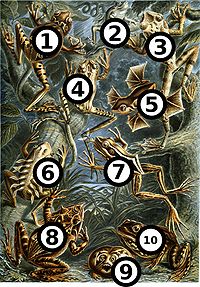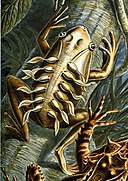File:Haeckel frogs with labels.jpg
Appearance

Size of this preview: 435 × 599 pixels. Other resolutions: 174 × 240 pixels | 349 × 480 pixels | 558 × 768 pixels | 744 × 1,024 pixels | 2,520 × 3,468 pixels.
Original file (2,520 × 3,468 pixels, file size: 2.66 MB, MIME type: image/jpeg)
File history
Click on a date/time to view the file as it appeared at that time.
| Date/Time | Thumbnail | Dimensions | User | Comment | |
|---|---|---|---|---|---|
| current | 04:48, 13 February 2006 |  | 2,520 × 3,468 (2.66 MB) | Ragesoss | From 1904 book by Haeckel |
File usage
No pages on the English Wikipedia use this file (pages on other projects are not listed).
Global file usage
The following other wikis use this file:
- Usage on bg.wikipedia.org
- Usage on ceb.wikipedia.org
- Usage on pl.wikipedia.org
- Usage on vi.wikipedia.org





